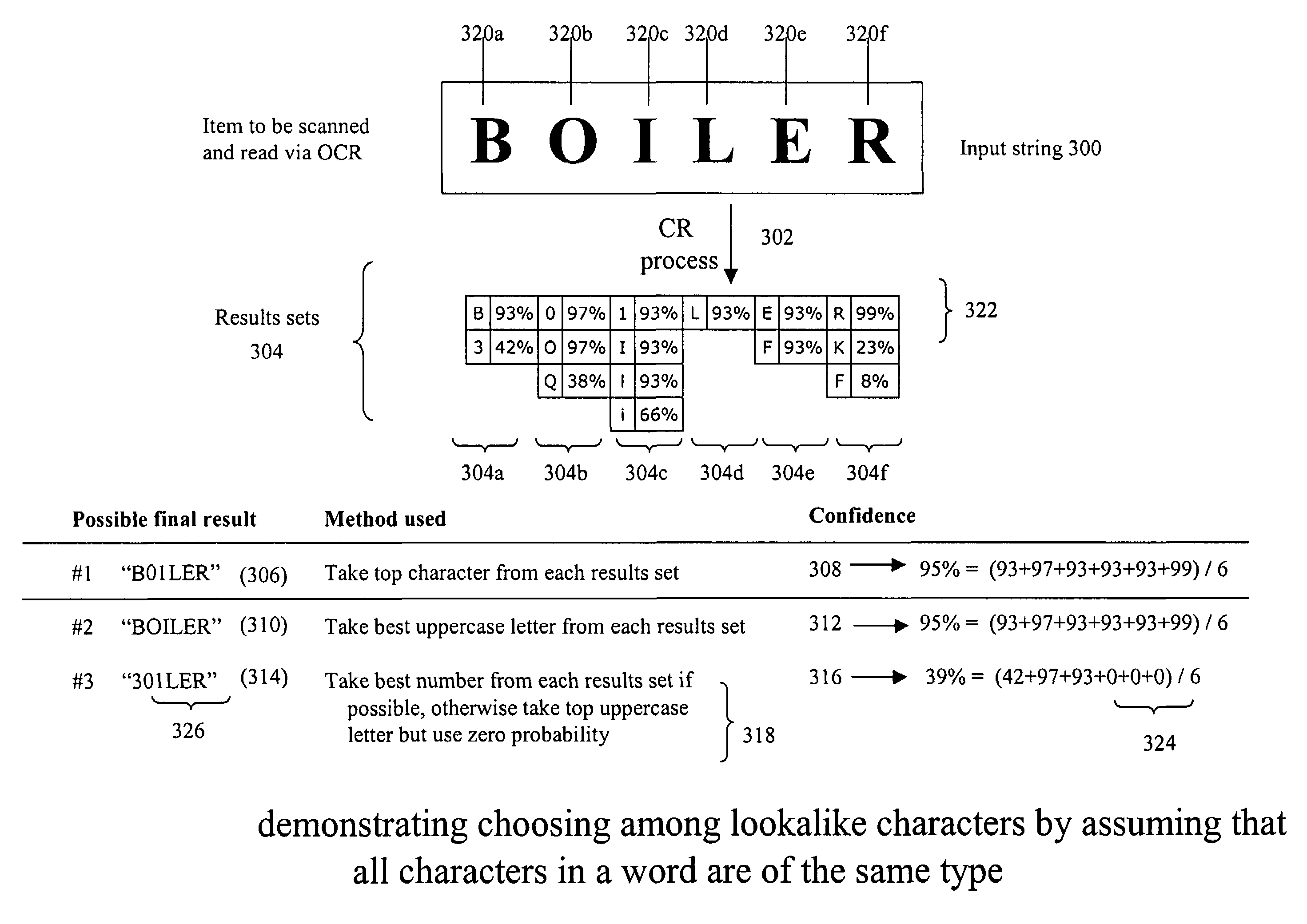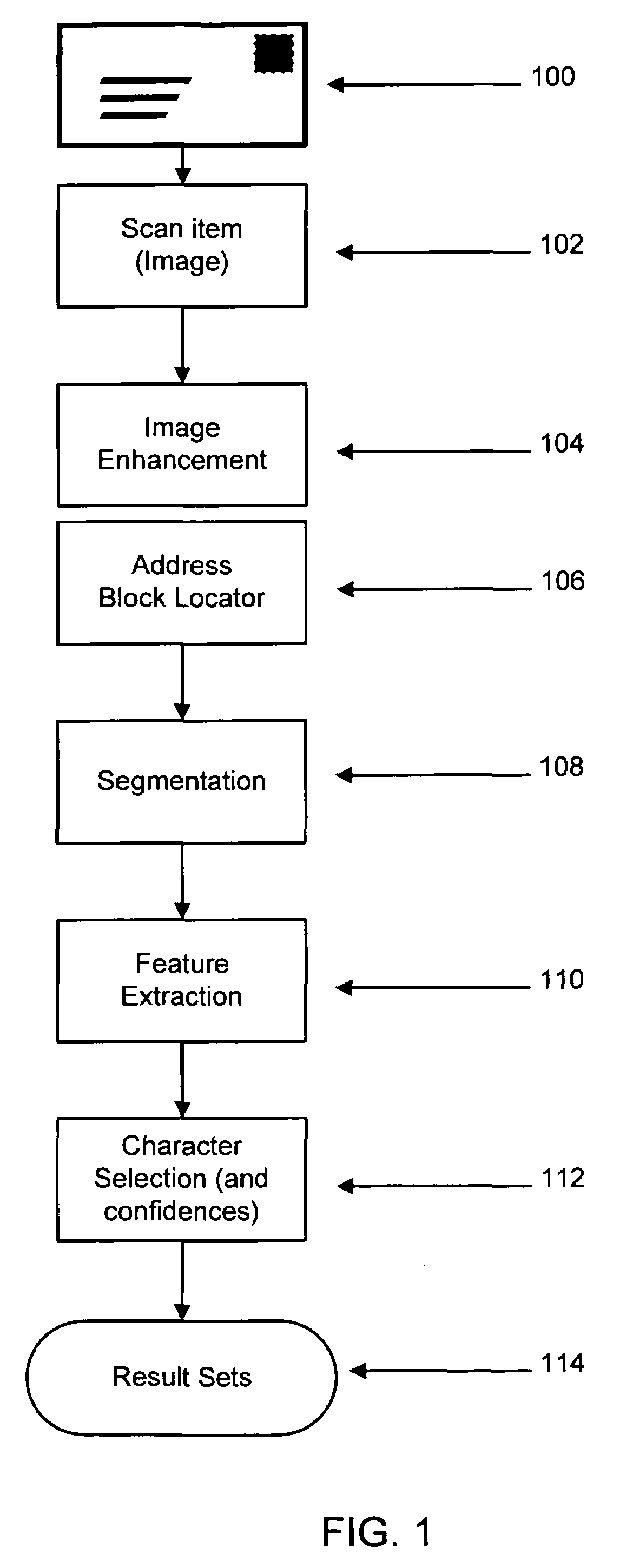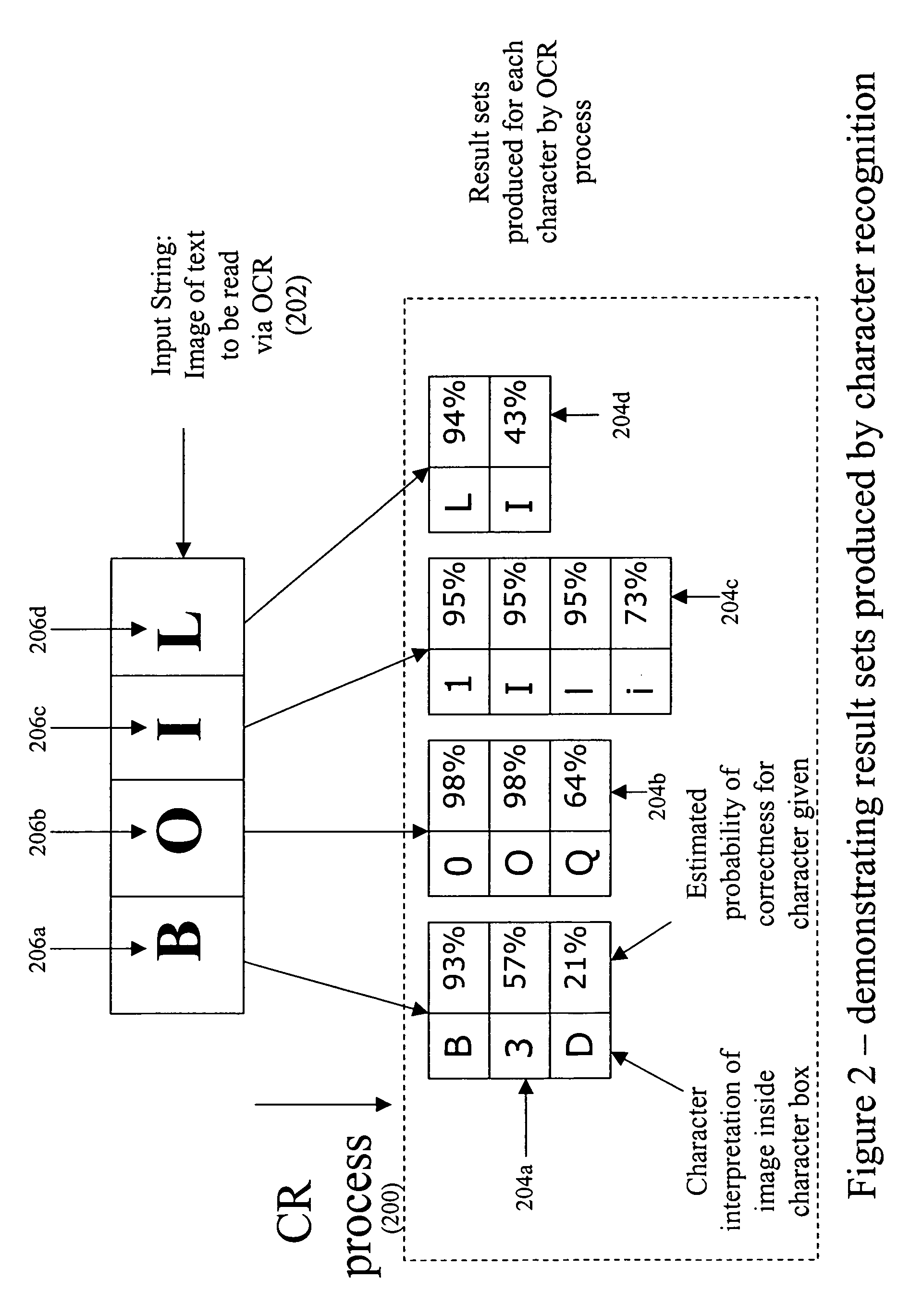Method for improving the accuracy of character recognition processes
a character recognition and process technology, applied in the field of character recognition technology, can solve the problems of poor quality or lack of clarity in the original input piece, errors in the recognition process, and the inability to determine which of two or more very similar characters is correct, and achieve the effect of improving results
- Summary
- Abstract
- Description
- Claims
- Application Information
AI Technical Summary
Benefits of technology
Problems solved by technology
Method used
Image
Examples
Embodiment Construction
[0015]A preferred embodiment of the present invention can be described with reference to FIG. 1, which illustrates an example of components in a character recognition process. The process indicated in FIG. 1 is depicted as an optical character recognition process operated on an input piece (such as the mailing address block of a mail envelope) 100. In addition to a mail envelope, countless other types of input pieces could be used. Other examples include bank checks, various forms, and almost any other type of document with data to be extracted. The input piece 100 then is scanned or otherwise captured in a digital form 102. Next, the scanned image 102 is processed with an image enhancement step 104 and the address block is located 106. Alternative component steps or arrangements could also be used during the initial stages of image enhancement 104 and address block location 106. For example, the steps could be subdivided or additional steps could be implemented to provide a rough, ...
PUM
 Login to View More
Login to View More Abstract
Description
Claims
Application Information
 Login to View More
Login to View More - R&D
- Intellectual Property
- Life Sciences
- Materials
- Tech Scout
- Unparalleled Data Quality
- Higher Quality Content
- 60% Fewer Hallucinations
Browse by: Latest US Patents, China's latest patents, Technical Efficacy Thesaurus, Application Domain, Technology Topic, Popular Technical Reports.
© 2025 PatSnap. All rights reserved.Legal|Privacy policy|Modern Slavery Act Transparency Statement|Sitemap|About US| Contact US: help@patsnap.com



